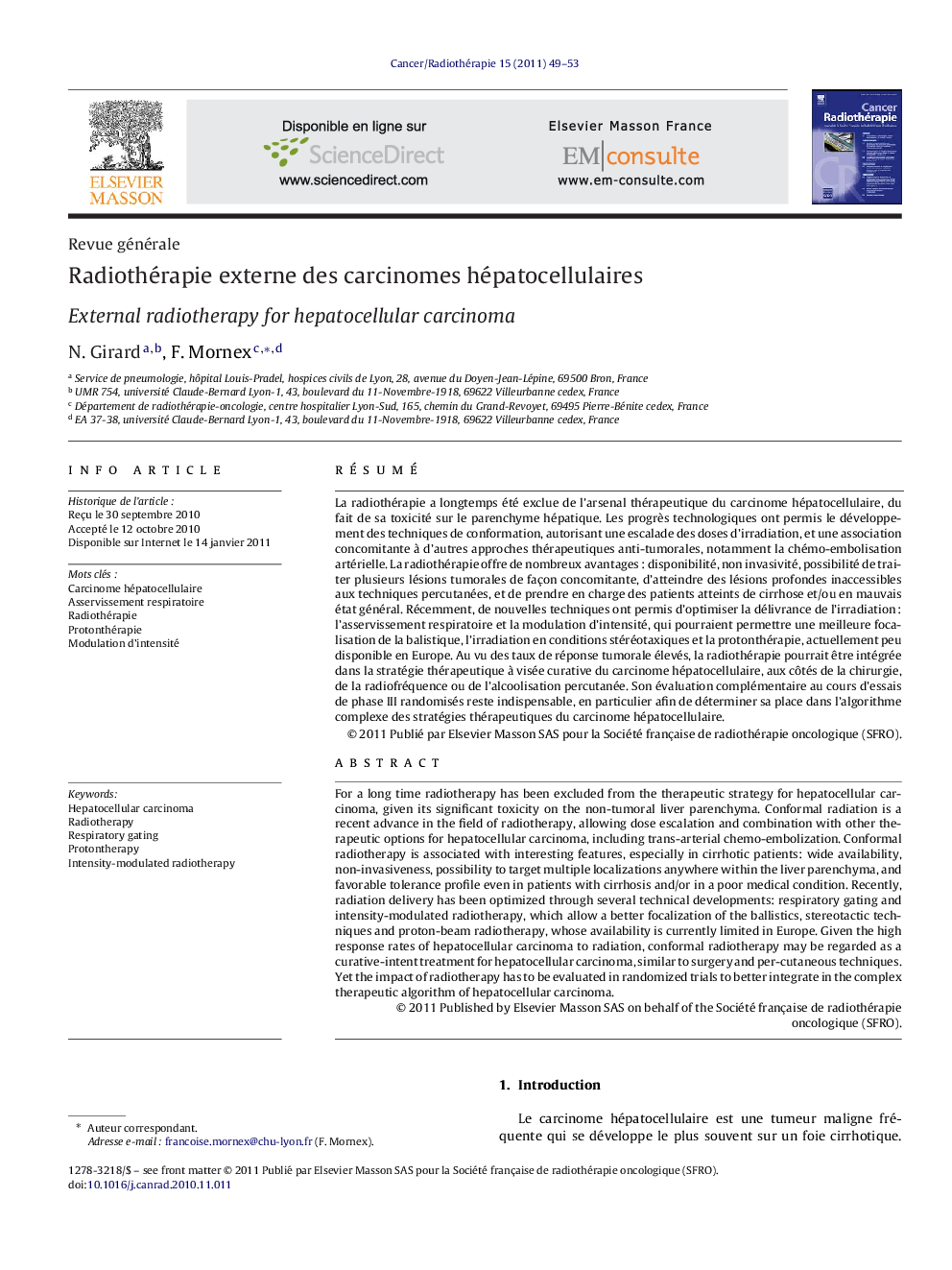| کد مقاله | کد نشریه | سال انتشار | مقاله انگلیسی | نسخه تمام متن |
|---|---|---|---|---|
| 2118283 | 1085228 | 2011 | 5 صفحه PDF | دانلود رایگان |

RésuméLa radiothérapie a longtemps été exclue de l’arsenal thérapeutique du carcinome hépatocellulaire, du fait de sa toxicité sur le parenchyme hépatique. Les progrès technologiques ont permis le développement des techniques de conformation, autorisant une escalade des doses d’irradiation, et une association concomitante à d’autres approches thérapeutiques anti-tumorales, notamment la chémo-embolisation artérielle. La radiothérapie offre de nombreux avantages : disponibilité, non invasivité, possibilité de traiter plusieurs lésions tumorales de façon concomitante, d’atteindre des lésions profondes inaccessibles aux techniques percutanées, et de prendre en charge des patients atteints de cirrhose et/ou en mauvais état général. Récemment, de nouvelles techniques ont permis d’optimiser la délivrance de l’irradiation : l’asservissement respiratoire et la modulation d’intensité, qui pourraient permettre une meilleure focalisation de la balistique, l’irradiation en conditions stéréotaxiques et la protonthérapie, actuellement peu disponible en Europe. Au vu des taux de réponse tumorale élevés, la radiothérapie pourrait être intégrée dans la stratégie thérapeutique à visée curative du carcinome hépatocellulaire, aux côtés de la chirurgie, de la radiofréquence ou de l’alcoolisation percutanée. Son évaluation complémentaire au cours d’essais de phase III randomisés reste indispensable, en particulier afin de déterminer sa place dans l’algorithme complexe des stratégies thérapeutiques du carcinome hépatocellulaire.
For a long time radiotherapy has been excluded from the therapeutic strategy for hepatocellular carcinoma, given its significant toxicity on the non-tumoral liver parenchyma. Conformal radiation is a recent advance in the field of radiotherapy, allowing dose escalation and combination with other therapeutic options for hepatocellular carcinoma, including trans-arterial chemo-embolization. Conformal radiotherapy is associated with interesting features, especially in cirrhotic patients: wide availability, non-invasiveness, possibility to target multiple localizations anywhere within the liver parenchyma, and favorable tolerance profile even in patients with cirrhosis and/or in a poor medical condition. Recently, radiation delivery has been optimized through several technical developments: respiratory gating and intensity-modulated radiotherapy, which allow a better focalization of the ballistics, stereotactic techniques and proton-beam radiotherapy, whose availability is currently limited in Europe. Given the high response rates of hepatocellular carcinoma to radiation, conformal radiotherapy may be regarded as a curative-intent treatment for hepatocellular carcinoma, similar to surgery and per-cutaneous techniques. Yet the impact of radiotherapy has to be evaluated in randomized trials to better integrate in the complex therapeutic algorithm of hepatocellular carcinoma.
Journal: Cancer/Radiothérapie - Volume 15, Issue 1, February 2011, Pages 49–53